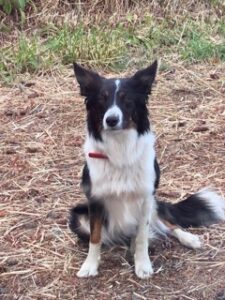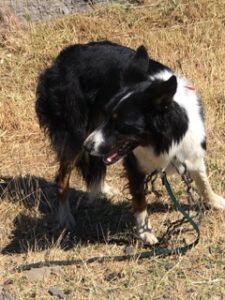

Raising Dogs to be sound for life
It’s easy to find volumes written about how to mold the mind of a good stock dog, but hard to find anything about how to raise one to stay sound. Yet I’ll bet not one of us doesn’t harbor dread that a good dog in our hands might take a few bad steps at 1 year old, turn up lame at 3 years and be crippled right about the time she’s got the confidence and savvy to know her stock and just what we want done with it.
At the same time, I’m sure that opinions are a dime a dozen on how much exercise a pup should have and when it should start. I’m not about to discount anyone’s opinion, especially not someone who has raised a number of dogs to success as working or competitive dogs. Still, I’m enough of a scientist to want to look at what is out there in the scientific literature, and then to check that information against experience—in this case the experience of trainers of supreme canine athletes like racing greyhounds and sled dogs.
The Science:
Most pet dogs are not raised to be athletes, and thus there is little experimental work to be found on dogs. In contrast, horses values often lie in their athletic ability, and there is some science on comparing the results of different exercise regimens for foals from birth to about 6 months.
Horses and dogs are different, of course—horses are born precocious, able to gallop from day one. Still they are comparable in other ways: they grow rapidly, doubling their birth weight within 6 weeks. They finish growing later, with the last of their growth plates closing between 4 and 5 years of age. Still, work on horse growth has shown us that bones and cartilage and less so tendons, respond and adapt to exercise during rapid growth phases, becoming denser, thicker and stronger.
The experimental design was to put some foals in box stall confinement and have others raised with at will exercise at pasture, and still others confined except for forced exercise for short intervals during the day. (Experimenters spooked the mares forcing foals to sprint alongside.) The results were that confined foals failed to develop the strength of bone and cartilage that foals at pasture did, and the foals forced to exercise grew good bone, but did not grow healthy cartilage.
Other studies looked at older foals trained on treadmills and showed that cartilage and bone failed to develop to full potential unless the training included strenuous exercise. Long slow trots did not force these tissues to adapt well enough.
At the same time, horses put into real training at young ages—18 months of age, for example—showed harmful changes to their cartilage. Although these horses were not overtly lame or sore, the changes did not bode well for lifelong soundness. Additionally, though these horses developed increased bone strength and stiffness, the orientation of the strength was such that it could contribute to the sort of brittle breaks that split fetlocks—the sort of breakdowns seen too often as racetrack accidents.
The work is limited, of course, and concentrated on horses, but the consensus seems to be that confinement is bad, at will exercise good, and forced exercise added to a baseline of confinement is probably not good. And starting serious training too early is dangerous.
The Experience:
I contacted both greyhound fanciers and sled dog trainers and veterinarians. While greyhounds are certainly athletes, they are sprint athletes (and herding dogs are considered second only to sled dogs as endurance athletes) and they are raced for a short period of their lives—to about 2 or 3 years of age, and rarely up to 6 years—just about the age a stock dog grows up mentally. Greyhound pups are raised in long pens where they can race each other along the fence line. The experts warn against giving the young dogs too much time in these pens, and to try to prevent the stop, pivot and turns at the pen ends.
Sled dogs on the other hand live long lives of work, sometimes still racing at 12 and 13. I spoke with Martin Buser, four-time winner of the Iditarod. He raises his pups by taking them on daily outings, walking the pups off leash in the woods and wilderness near his home outside of Anchorage. They explore and play at will, getting accustomed to the terrain they will someday race on. In their pens they have toys and exercise wheels—the sled dog equivalent of hamster wheels. The pups play on them on their own, sometimes starting as young as 3-4 weeks of age.
Buser reports he rarely sees arthritis in his dogs. Instead he sees muscle injuries in the triceps, biceps and pectorals. He watches their feet constantly: “In the Iditarod each foot touches the ground 2 million times. That’s 8 million opportunities for injury.”
I also spoke with sled dog veterinarian Michael Davis. He confirmed Buser’s reports, saying that while he couldn’t completely confirm the ages of his dogs without checking, “I know he has some fossils still hanging around the kennel.” He added that he does see carpal and shoulder arthritis, but that those cases are traumatic in origin. That is, the arthritis is not due to normal wear and tear of a sled dog, but to accidents that did severe damage to the joints.
Conclusions
This information is gratifying for me, as I have long believed for my own dogs and advised owners that the best exercise for their pups is at-will exercise, at least up to age 6 months and maybe longer. Watch pups at play: they sprint and pivot, they flop and jump, pounce and wrestle. They rest when they feel like it and explore when their noses lead them on. As I watch, I can picture the cartilage and bone getting the signals: grow thicker here, stronger here, not so much over here. At least for the early months, serious training, using repetitive movement in straight lines, is probably too much for young forming cartilage. At least that is how I imagine it, and I haven’t heard anything yet that changes my mind.